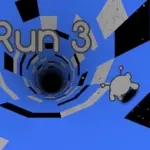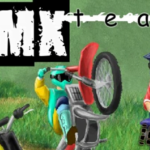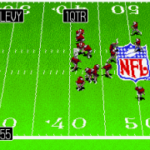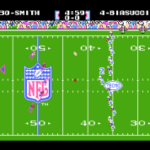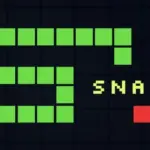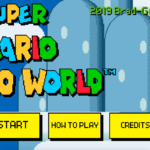One Punch Man has taken the manga and anime world by storm with its unique approach to the shonen genre. By subverting common tropes and expectations, onepunchmanmanga.org offers a refreshing and often hilarious take on superhero stories. Let’s explore how this groundbreaking series turns shonen conventions on their head.
Inverting the Underdog Hero Archetype
A hallmark of shonen manga is the underdog protagonist who must train hard and overcome seemingly insurmountable odds. One Punch Man completely flips this trope with Saitama, a hero so overpowered that he defeats every enemy with a single punch. Rather than struggling to become stronger, Saitama struggles with the boredom and lack of challenge that comes with his immense power.
This inversion cleverly comments on the predictability of typical shonen power scaling. Instead of wondering if the hero will triumph, readers are left pondering the existential crisis of a man who has achieved his dream but finds it unsatisfying. It’s a brilliant twist that forces us to reconsider what makes a compelling protagonist.
Deconstructing the Epic Battle
Shonen manga are renowned for their epic, drawn-out battles where heroes push themselves to new limits. One Punch Man satirizes this by having most fights end instantaneously. The build-up and posturing of villains is rendered comical when Saitama nonchalantly defeats them with minimal effort.
This subversion extends to the visual presentation of fights. While many scenes are stunningly illustrated with intricate detail, the actual moments of combat are often depicted with simplified art. This stark contrast emphasizes the anticlimactic nature of the battles and pokes fun at the overwrought nature of typical shonen confrontations.
The Supporting Cast Shines
Interestingly, by downplaying Saitama’s battles, One Punch Man creates space for more compelling conflicts involving the supporting cast. Characters like Genos, Mumen Rider, and various heroes face genuine struggles and growth, providing the tension and emotional investment typically reserved for the main character in other series.
Satirizing Hero Society and Rankings
One Punch Man takes a critical look at the concept of professional heroes and the bureaucracy surrounding them. The Hero Association, with its complex ranking system and politics, serves as a vehicle for social commentary. It explores themes of public perception, media influence, and the commodification of heroism.
The series often highlights the disconnect between true heroism and official recognition. Saitama, despite being the strongest hero, struggles to climb the ranks due to his unassuming appearance and lack of public relations skills. Meanwhile, some higher-ranked heroes are shown to be more concerned with fame and status than actually helping people.
Redefining Strength and Heroism
Through its diverse cast of heroes and villains, One Punch Man challenges readers to reconsider what it means to be strong or heroic. Characters like Mumen Rider, who lacks exceptional powers but possesses unwavering courage, often embody a purer form of heroism than their stronger counterparts.
This nuanced portrayal adds depth to the story and encourages readers to look beyond simple power levels – a refreshing take in a genre often fixated on who’s the strongest.
Blending Comedy and Action
While many shonen series incorporate humor, One Punch Man stands out for making comedy a central element rather than just comic relief. The series masterfully balances intense action sequences with deadpan humor and absurd situations.
This blend of tones allows One Punch Man to simultaneously celebrate and parody the shonen genre. It can deliver thrilling fights and heartfelt moments of heroism while also poking fun at the tropes and excesses of typical battle manga.
Breaking the Fourth Wall
One Punch Man occasionally breaks the fourth wall, acknowledging its nature as a manga and playing with reader expectations. This meta-awareness adds another layer of humor and reinforces the series’ deconstruction of shonen conventions.
Art Style and Visual Storytelling
The manga’s art, particularly in Yusuke Murata’s redraw, is nothing short of spectacular. However, it uses this high level of detail strategically, often contrasting it with simpler, more cartoonish art for comedic effect. This visual flexibility enhances the storytelling and humor in unique ways.
One Punch Man also subverts expectations with its character designs. Saitama’s plain appearance contrasts sharply with the more elaborate designs of other heroes and monsters. This visual juxtaposition reinforces the series’ themes and adds to its comedic impact.
Impact on the Manga Industry
The success of One Punch Man has had a significant impact on the manga industry. Its unconventional approach has inspired other creators to experiment with genre conventions and storytelling techniques. The series has shown that there’s an audience for works that cleverly subvert established tropes.
Moreover, One Punch Man’s journey from webcomic to professionally published manga and anime adaptation has opened new pathways for aspiring creators. It demonstrates the potential for online platforms to launch major franchises.
Conclusion
One Punch Man’s brilliant deconstruction of shonen tropes has created a series that is both a loving homage and a clever critique of the genre. By inverting common conventions, it offers fresh perspectives on themes of heroism, strength, and the nature of conflict in storytelling.
The series’ blend of stunning action, insightful comedy, and social commentary has resonated with fans worldwide, cementing its place as a modern manga classic. As Read Onepunch-Man Manga Free Online continues to evolve, it challenges both readers and creators to think differently about what shonen manga can be.
We’d love to hear your thoughts! How has One Punch Man changed your perspective on shonen manga? Share your experiences and favorite moments in the comments below!

